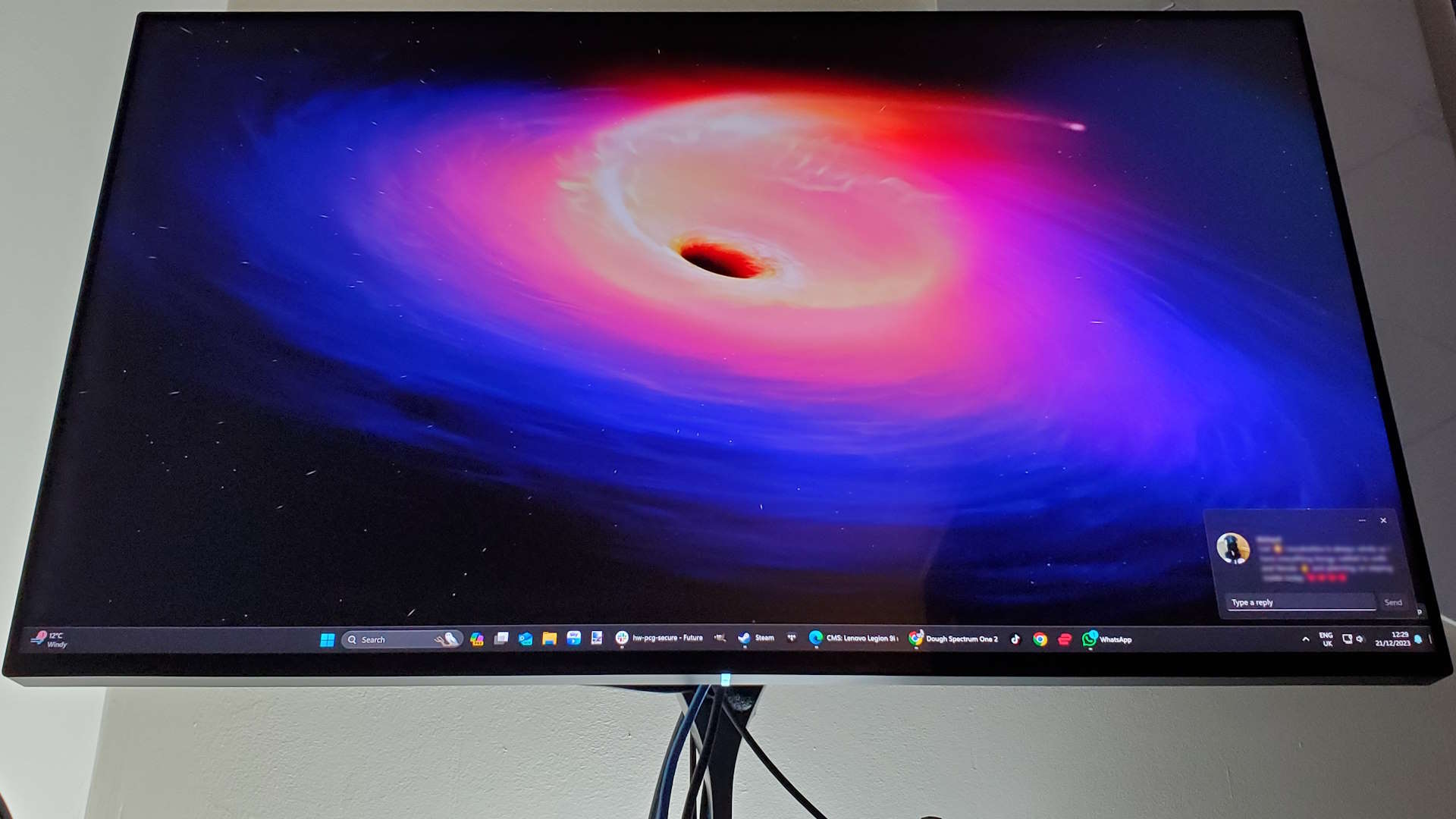
The Dough Spectrum One has been one of my favourite high-refresh 4K gaming monitors since it first launched onto the market under the original Eve brand. Since then we've seen a second version with a glossy coating over the panel, sharpening the contrast and making its colours pop and enhancing its HDR experience. Now we've got a further iteration, using Corning's Gorilla Glass with DXC.
The original matte-coated Spectrum is still a good monitor, but the glossy version was a game changer for me. It made a huge difference to the contrast levels on the display and I'm consistently impressed with the colours you can get out of the LG-made IPS panel it uses every time I booted up the test rig it was plugged into.
So I was excited to see what the new Corning Gorilla Glass version—the first gaming monitor to launch sporting that glossy glass coating—could deliver. The promise is that this new glass coating should handle reflections better and offer a more robust anti-abrasion cover.
I think that's more important for smartphones that spend much of their lives jammed into the grotty pockets of careless owners or skittering across pavements and tabletops. But as Apple's Studio Display has edge-to-edge glass, Dough is hoping to tempt designers as well as gamers with its new option.
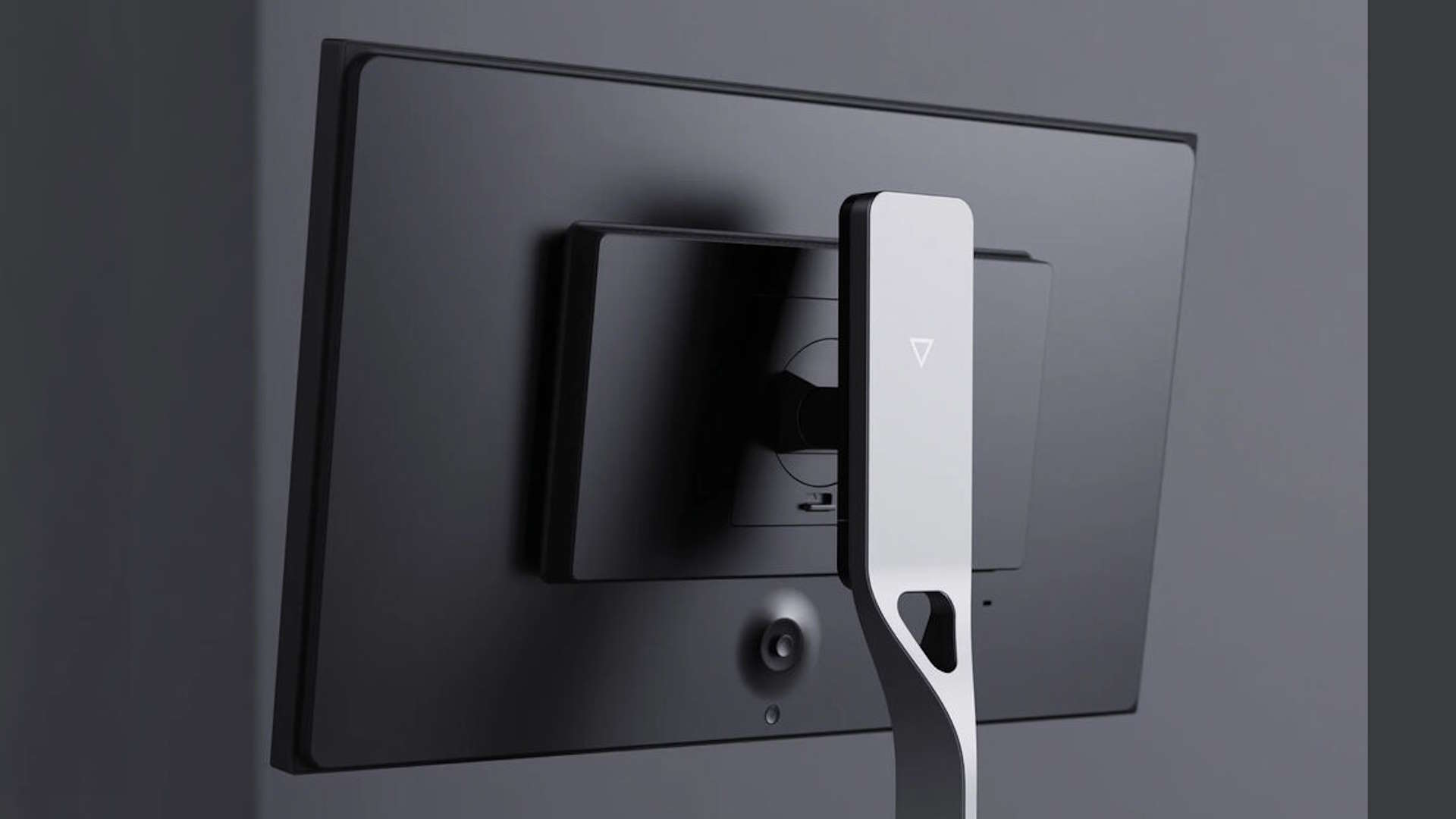
Size: 27-inch
Panel type: IPS
Native resolution: 3840 x 2160
Refresh rate: 144Hz
Response: 1ms (overdrive)
Inputs: 2x HDMI 2.1, 1x DP 1.4a, USB Type-C
HDR: HDR10, DisplayHDR 600
Peak luminance: 750 cd/m²
Features: USB 3.2 Gen2 hub, 100W PD, FreeSync Premium Pro, G-Sync Compatible
Price: $799 (without stand)
I have to say that I was actually more excited to know that at launch Dough's newest monitor is going to be available in retail and you aren't going to have to brave the customer service lottery that has been the hallmark of its history.
There have been significant issues with order fulfilment on monitor orders direct from Dough's own webstore, and even worse issues with people trying to get refunds on orders that are clearly not being completed. I've spoken with both users and Dough's CEO on this topic and I don't think either are ever going to see eye-to-eye.
Suffice to say a huge amount of trust and goodwill has been lost, and a lot of folk are going to be permanently, and perhaps legitimately, put off its monitors because of this. Which is a huge shame because the actual hardware is excellent. I would still suggest the safest approach to picking up a Dough screen would be to go through established retail channels, such as Amazon in Europe and B&H Photo in the US.
So, what's the new display like? Well, it's gorgeous. It's bright, crystal clear, and responsive, too. The contrast with the glossy coating is absolutely boosted above what the matte version can deliver, and it loses all the slightly indistinct filtering that a matte coating always leaves. It actually feels like you're looking at the panel, where, in comparison, the original screen is like looking through dirty glasses.
The DisplayHDR 600 rating, and peak luminance of 750cd/m² means that it's actually a pretty damned good HDR panel, too. Now that I've learned my new favourite Windows keyboard shortcut (Win+Alt+B) I'm a HDR guy now, and it looks stunning in Cyberpunk 2077 and FC24 and Baldur's Gate 3.
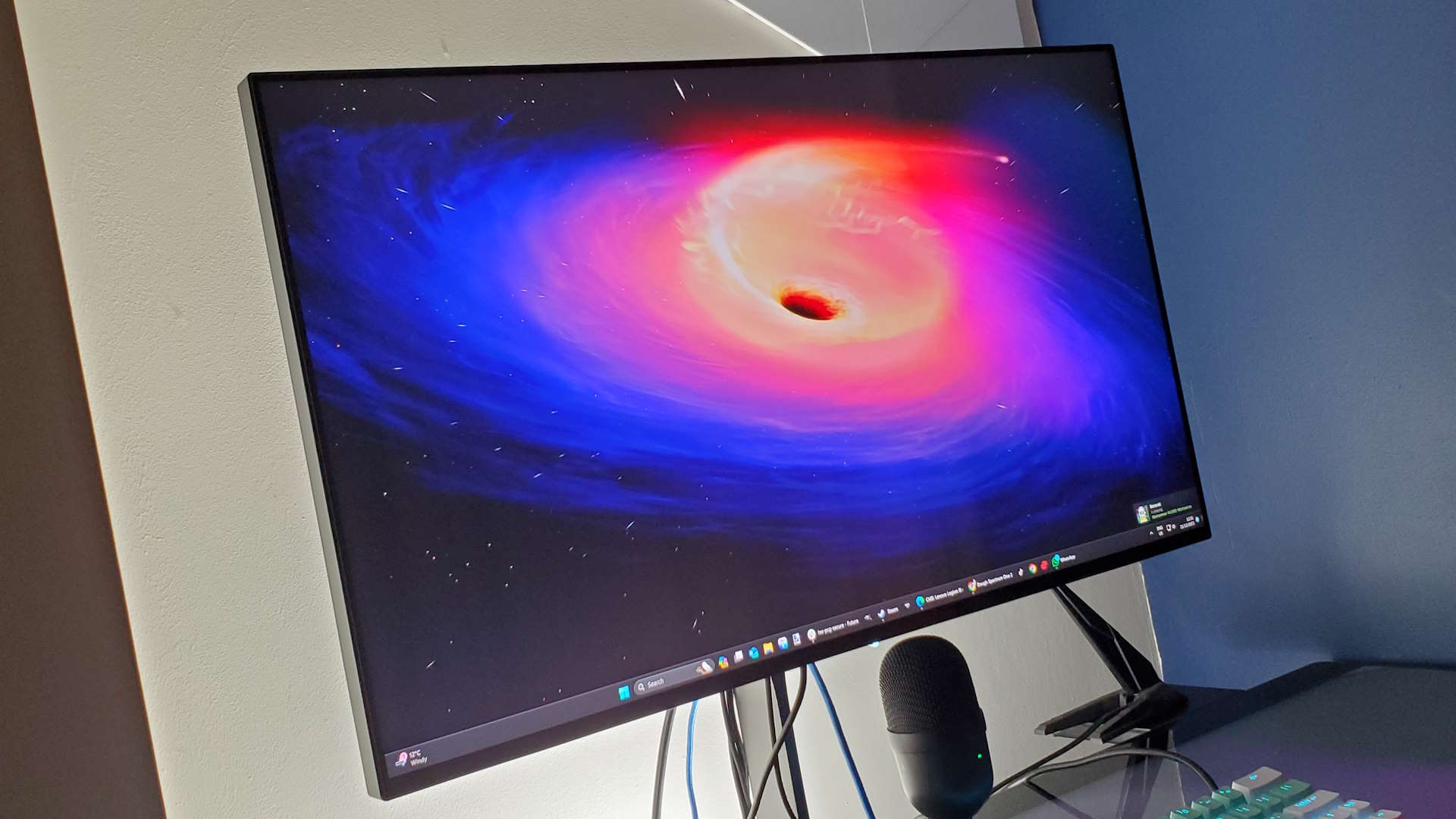
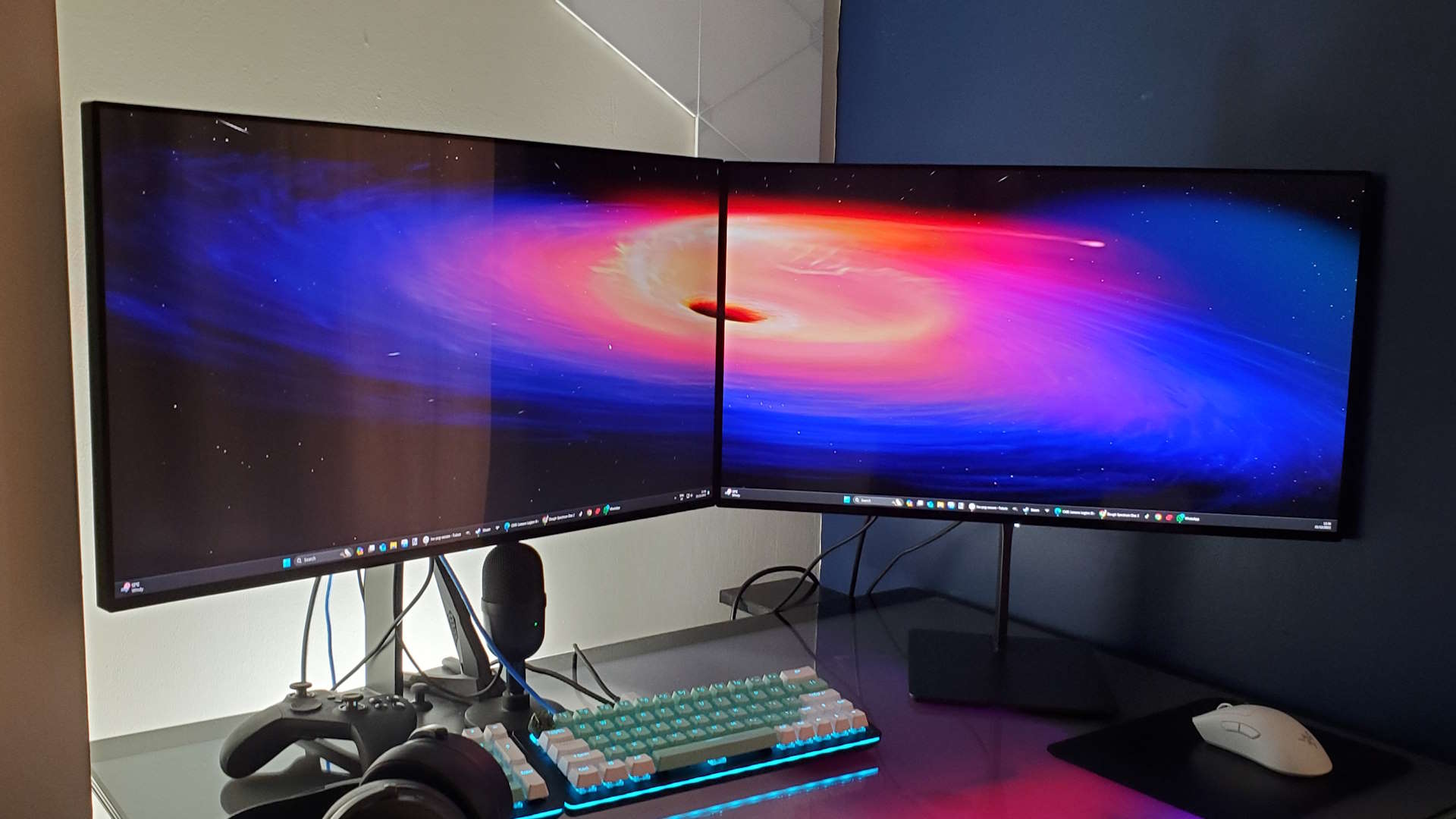
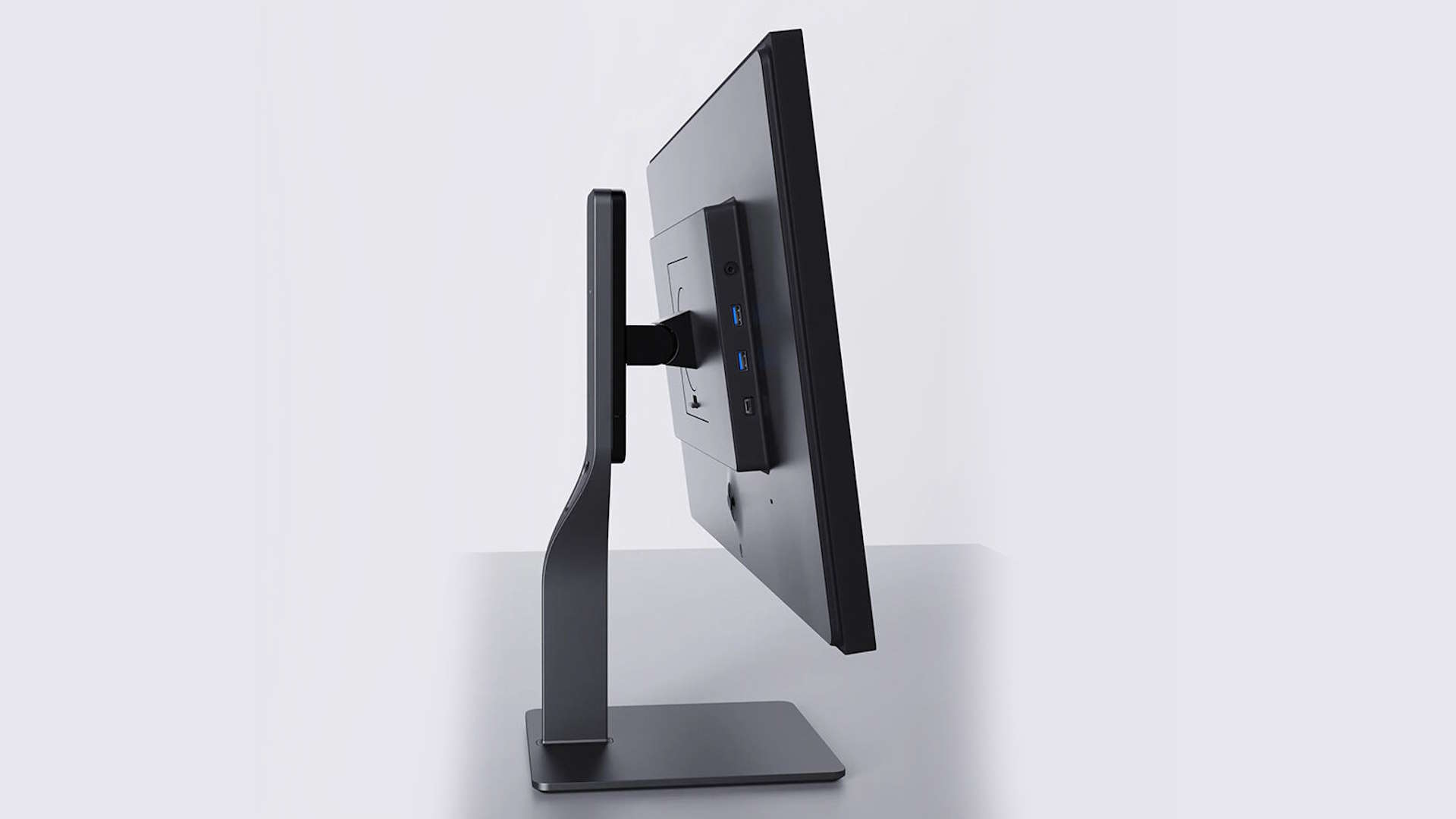
It's also a great device on the whole, too. The crowd-sourced nature of the Spectrum as an original monitor means that it's got a built-in USB hub that either works via USB Type-B or Type-C and also contains a KVM switch as well. It will also deliver 100W of power over that Type-C connection which also uses the Alt DisplayPort mode to work as a display connection, too. That makes it one of those one-cable-to-rule-them-all monitors for plugging into most laptops. Though not gaming laptops—that 100W power limit isn't going to keep a discrete GPU fed in a modern machine.
But what the new Dough Spectrum One with Corning Gorilla Glass isn't is wholly different from the previous glossy version of the same screen. I've got them sat side by side on my desk right now and I would be hard-pushed to tell the difference if I couldn't get up close and try to stick a nail behind the cover.
The new glass cover is edge-to-edge and is bonded to the panel in a way that makes it feel far more robust than the previous version. But, for me, that's where the differences begin and end. That's not necessarily a bad thing when the standard glossy is this good, but when you're being asked to spend another $200 for the privilege I start to wonder about why you'd want to.
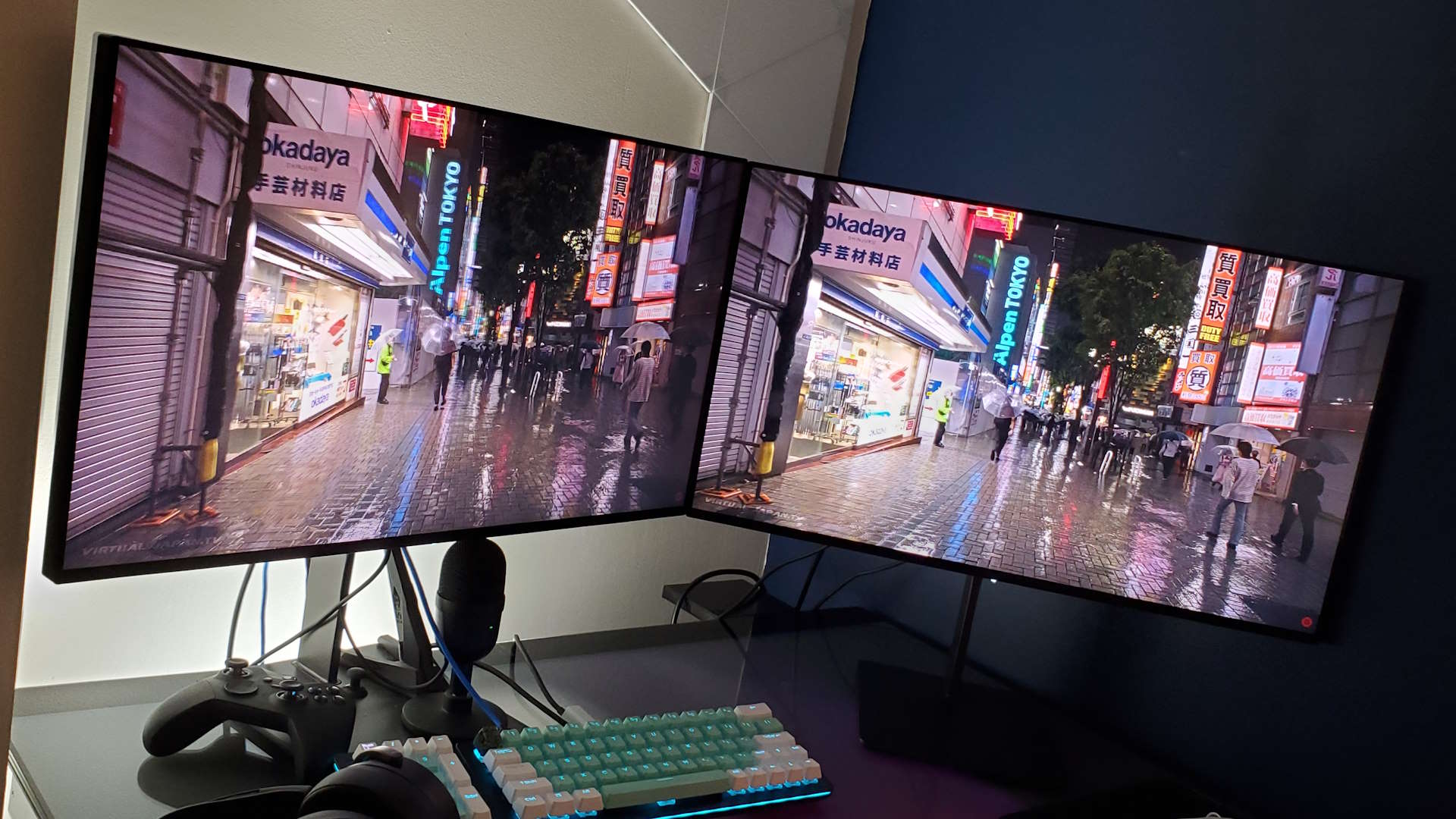
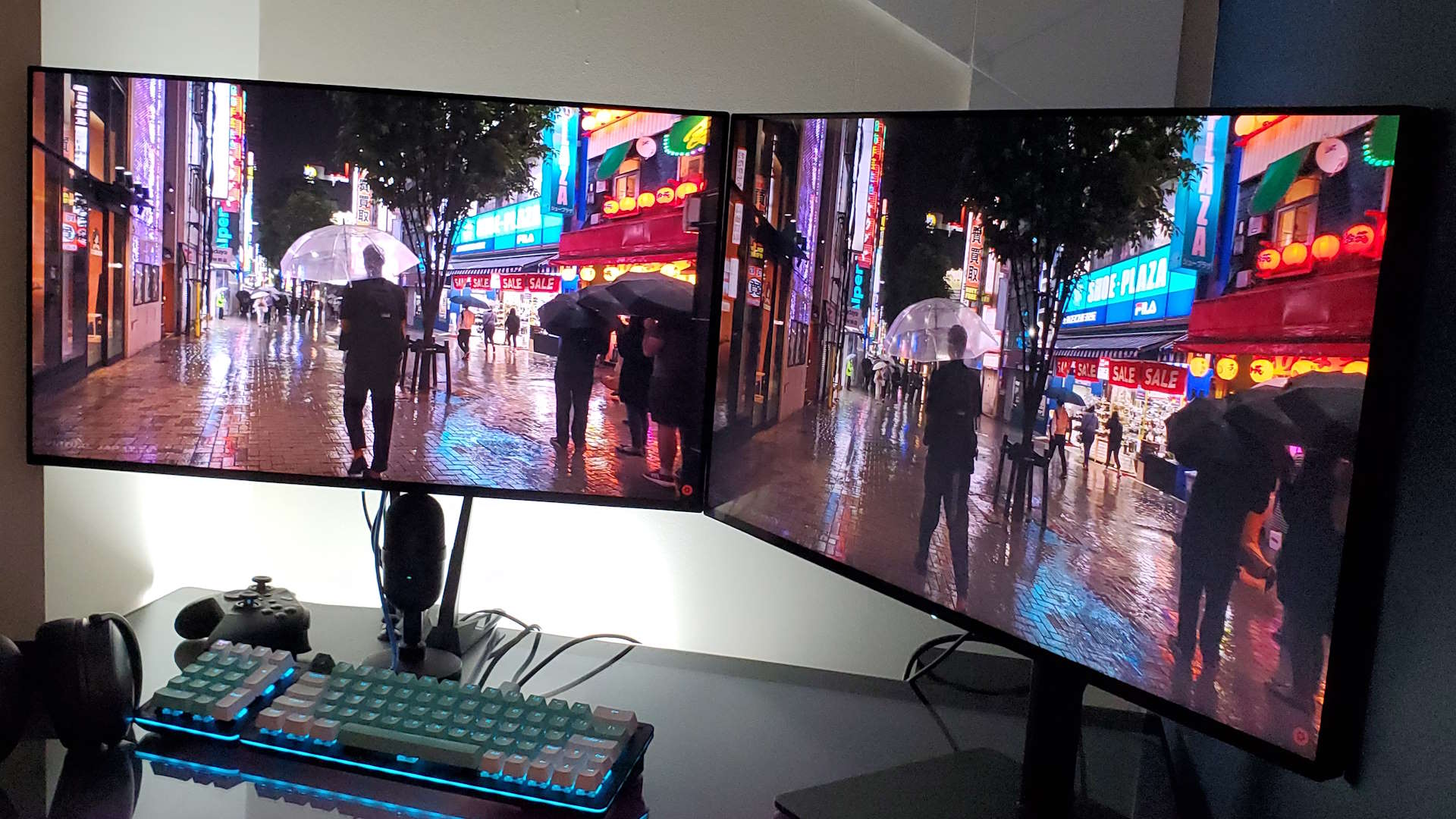
✅ You think your monitor is going to take a lot of punishment: The Gorilla Glass coating has an anti-abrasion finish that makes it more resistant to scratches, if you're the type to throw a controller or two.
❌ You just want a lovely glossy 4K screen: The original Dough Spectrum One already comes with a glossy coating for significantly less, and I really can't tell the difference.
Though I do have two and four year-old boys, and I guess in the face of their onslaught anything that makes my precious hardware more, well, hard is always welcome. But I still don't think I'd want to spend that extra cash to make it happen.
Right now the original glossy version is on sale, again from B&H Photo in the US, for $600—admittedly as a $100 holidays discount—but you will still need to add a $100 stand to your trolley unless you already have a monitor arm at home that will fit it. That makes this glass version almost $900 all-in and the standard glossy $700.
That's a lot of money for a 27-inch 4K monitor, though admittedly the latest LG Ultragear 27GR93U, with its dimmer 144Hz 4K panel, is still $630 so there is a level of parity here with the original glossy Spectrum One. But for the Gorilla Glass version I just don't see enough of an improvement over its already excellent glossy sibling to make it worth the expense.
Now, how this Gorilla Glass coating is going to look on the upcoming OLED Spectrum Black... well, that's going to be shiny.







